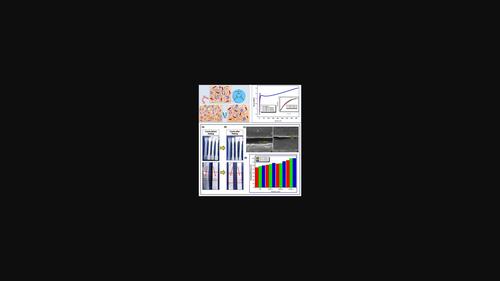当前位置:
X-MOL 学术
›
Polym. Int.
›
论文详情
Our official English website, www.x-mol.net, welcomes your feedback! (Note: you will need to create a separate account there.)
Self-healing thermoplastic elastomeric blends of zinc-ionomer and styrene–butadiene–styrene block copolymer and their characterization
Polymer International ( IF 3.2 ) Pub Date : 2023-10-09 , DOI: 10.1002/pi.6582 Shilpi Tiwari 1 , Dibyendu S. Bag 1 , Mayank Dwivedi 1
Polymer International ( IF 3.2 ) Pub Date : 2023-10-09 , DOI: 10.1002/pi.6582 Shilpi Tiwari 1 , Dibyendu S. Bag 1 , Mayank Dwivedi 1
Affiliation

|
We report the development of novel self-healing binary thermoplastic elastomeric blends of Zn2+-neutralized poly[ethylene-co-(methacrylic acid)] (Zn-ionomer) and styrene–butadiene–styrene block copolymer (SBS). Zn-ionomer/SBS blends were prepared by the melt-blending technique using a twin-screw extruder with three mass ratios of 75/25, 50/50 and 25/75. Structure, phase morphology and thermal as well as tensile properties of the samples were characterized. Fourier transform infrared spectroscopy results indicated the presence of two types of polymeric materials and their interactions. Scanning electron microscopy images confirmed the miscibility of blend components which remarkably influenced the properties of the blends. The optimum peak degradation temperature of Zn-ionomer/SBS (75/25 wt%) blend was observed to be 484 °C. The ratio of the tensile strength of the healed specimens to that of the original specimens was implemented to quantitatively evaluate the self-healing efficiency of the materials. The self-healing efficiencies were calculated to be 55.42%, 58.36% and 60.75% for Zn-ionomer samples healed for 4, 8 and 16 h, respectively. All of the blend samples exhibited self-healing behavior and the self-healing efficiency was more than that of virgin Zn-ionomer which may be credited to the high mobility of SBS segments in the blends. The healing efficiency was increased with an increase of SBS content in the blends and also heat energy facilitated the healing process. The self-healing efficiencies of Zn-ionomer/SBS (25/75 wt%) blend sample were calculated to be 75.09%, 80.27% and 80.87%, respectively, for 4, 8 and 16 h of healing time at 100 °C. A comparison of optical micrographs of the cut area of samples (before healing and after the healing process) was also made and self-healing of the blend materials was observed. © 2023 Society of Industrial Chemistry.
中文翻译:

锌离聚物和苯乙烯-丁二烯-苯乙烯嵌段共聚物的自修复热塑性弹性体共混物及其表征
我们报告了Zn 2+中和聚[乙烯-共-(甲基丙烯酸)](锌离聚物)和苯乙烯-丁二烯-苯乙烯嵌段共聚物(SBS)的新型自修复二元热塑性弹性体共混物的开发。采用双螺杆挤出机采用熔融共混技术制备了 Zn-离聚物/SBS 共混物,三种质量比为 75/25、50/50 和 25/75。对样品的结构、相形态、热性能以及拉伸性能进行了表征。傅里叶变换红外光谱结果表明存在两种类型的聚合物材料及其相互作用。扫描电子显微镜图像证实了共混物组分的混溶性,这显着影响了共混物的性能。据观察,Zn-离聚物/SBS (75/25 wt%) 混合物的最佳峰值降解温度为 484 °C。采用愈合后试样的拉伸强度与原始试样拉伸强度的比值来定量评价材料的自修复效率。计算出愈合 4、8 和 16 小时的锌离聚物样品的自愈合效率分别为 55.42%、58.36% 和 60.75%。所有共混物样品均表现出自修复行为,并且自修复效率高于原始锌离聚物,这可能归因于共混物中SBS链段的高流动性。随着共混物中 SBS 含量的增加,愈合效率也随之提高,而且热能也促进了愈合过程。经计算,在 100 °C 下愈合时间为 4、8 和 16 小时时,锌离聚物/SBS (25/75 wt%) 共混物样品的自愈合效率分别为 75.09%、80.27% 和 80.87%。还对样品切割区域(愈合之前和愈合过程之后)的光学显微照片进行了比较,并观察了共混材料的自修复情况。 © 2023 工业化学学会。
更新日期:2023-10-09
中文翻译:

锌离聚物和苯乙烯-丁二烯-苯乙烯嵌段共聚物的自修复热塑性弹性体共混物及其表征
我们报告了Zn 2+中和聚[乙烯-共-(甲基丙烯酸)](锌离聚物)和苯乙烯-丁二烯-苯乙烯嵌段共聚物(SBS)的新型自修复二元热塑性弹性体共混物的开发。采用双螺杆挤出机采用熔融共混技术制备了 Zn-离聚物/SBS 共混物,三种质量比为 75/25、50/50 和 25/75。对样品的结构、相形态、热性能以及拉伸性能进行了表征。傅里叶变换红外光谱结果表明存在两种类型的聚合物材料及其相互作用。扫描电子显微镜图像证实了共混物组分的混溶性,这显着影响了共混物的性能。据观察,Zn-离聚物/SBS (75/25 wt%) 混合物的最佳峰值降解温度为 484 °C。采用愈合后试样的拉伸强度与原始试样拉伸强度的比值来定量评价材料的自修复效率。计算出愈合 4、8 和 16 小时的锌离聚物样品的自愈合效率分别为 55.42%、58.36% 和 60.75%。所有共混物样品均表现出自修复行为,并且自修复效率高于原始锌离聚物,这可能归因于共混物中SBS链段的高流动性。随着共混物中 SBS 含量的增加,愈合效率也随之提高,而且热能也促进了愈合过程。经计算,在 100 °C 下愈合时间为 4、8 和 16 小时时,锌离聚物/SBS (25/75 wt%) 共混物样品的自愈合效率分别为 75.09%、80.27% 和 80.87%。还对样品切割区域(愈合之前和愈合过程之后)的光学显微照片进行了比较,并观察了共混材料的自修复情况。 © 2023 工业化学学会。



























 京公网安备 11010802027423号
京公网安备 11010802027423号